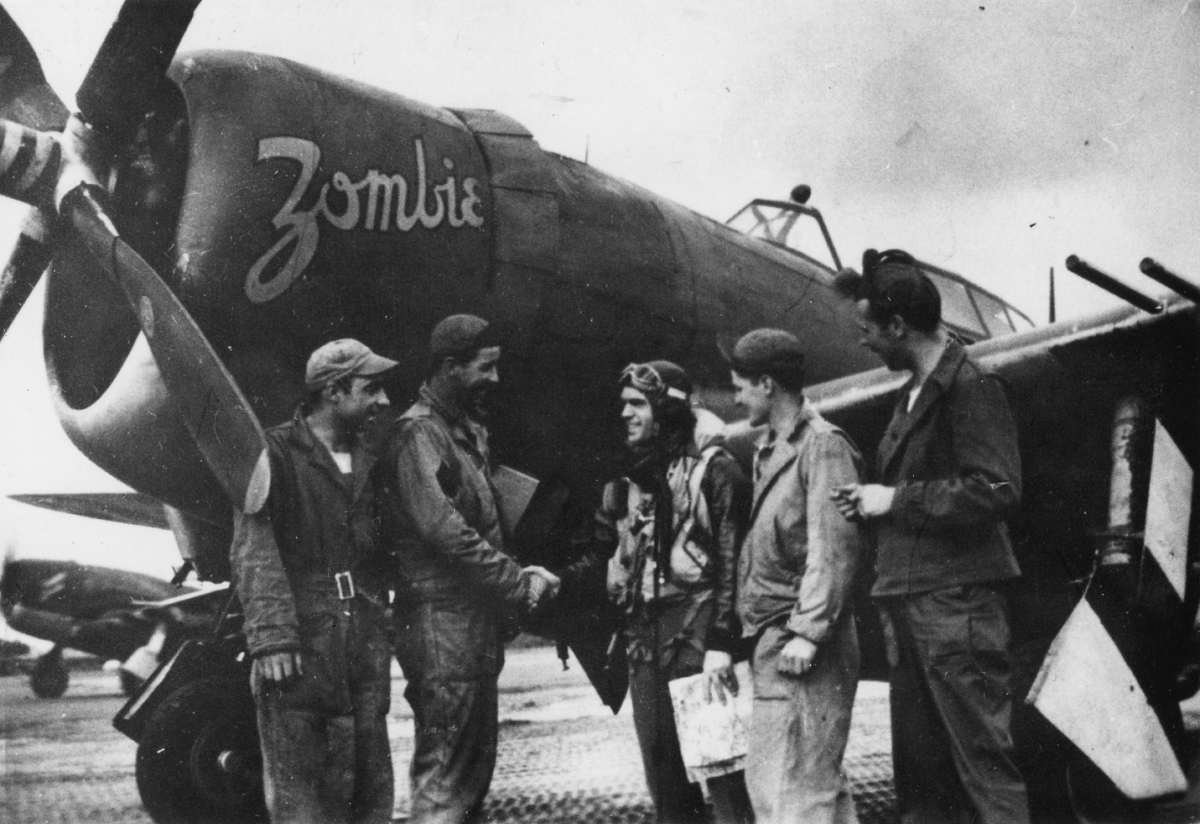SSgt Volmer Riis Koefoed
(1907 - 1981)
Profile
Volmer R. Koefoed was one of the Danish nationals serving in the US Army Air Forces. He enlisted in 1942 and served as an armourer in Europe in the 356th Fighter Group in the United Kingdom.
Volmer Riis Koefoed was born on 29 September 1907 in Frederiksberg, to Andreas Christoffer Kofoed and Petrea Frederikke Kofoed (née Rasmussen). [1] The family lived in different parts of Copenhagen during his upbringing.[2]
He emigrated to the United States arriving in Brooklyn, New York, from Copenhagen on 18 February 1925 onboard the SS Estonia. [3] He had been engaged as ordinary seaman in Copenhagen on 4 February 1925 and deserted the ship after arrival in New York.[4]
He settled in Queens and—in October 1940 when he was drafted—he worked at the General Dyestuff Corporation, which had had the rights to sell dyes made by the later infamous German company I. G. Farben.[5]

Koefoed enlisted in the US Army on 30 September 1942 at Fort Jay Governors Island, New York (32515988). [6] He seems to have been trained as an armourer and posted to 361st Fighter Squadron.[7]
This squadron was constituted on 8 December 1942 and assigned to the 356th Fighter Group from 12 December 1942 to 10 November 1945. It served in the European Theatre of Operations (ETO) from July 1943 operating P-47s in 1943-44 and P-51s in 1944-45.[8]
Koefoed was naturalised as a United States Citizen in April 1943. He had married Celestine S. Reale earlier that year.[9]
In January 1944, a photo of Staff Sgt Koefoed, Lt Ralph P. Hubbell and Cpl. Peter Kost making a final check-up of guns and ammunition on a P-47 was included in a newspaper feature. [10] The squadron was based at Martlesham in England at the time.
He was discharged on 6 November 1945. [11] He returned to New York after the war. He died in New Jersey on 18 November 1981.[12]
Endnotes
[1] DNA: 1921 Census of Denmark.
[2] Copenhagen Municipal Archives: Politiets registerblade. Station 7. Filmrulle 0023. Registerblad 819 (unikt id. 2313225).
[3] Ancestry: Connecticut, U.S., Federal Naturalization Records, 1790-1996.
[4] Ancestry: New York, U.S., Arriving Passenger and Crew Lists (including Castle Garden and Ellis Island), 1820-1957.
[5] The Donald F. and Mildred Topp Othmer Library of Chemical History: General Dyestuff Corporation collection, 1939-1967 (online finding aid), https://othmerlib.sciencehistory.org/record=b1071762~S6.
[6] Ancestry: U.S., World War II Army Enlistment Records, 1938-1946.
[7] Ancestry: Connecticut, U.S., Federal Naturalization Records, 1790-1996.
[8] Maurer, M., & States., A. F. S. H. R. C. (1982). Combat squadrons of the Air Force, World War II, p. 449.
[9] Ancestry: Connecticut, U.S., Federal Naturalization Records, 1790-1996.
[10] Home Town Air Force Battles from Britain, Newsday, 6 January 1944, p. 15.
[11] Ancestry: U.S., Department of Veterans Affairs BIRLS Death File, 1850-2010.
[12] Ancestry: U.S., Social Security Death Index, 1935-2014.